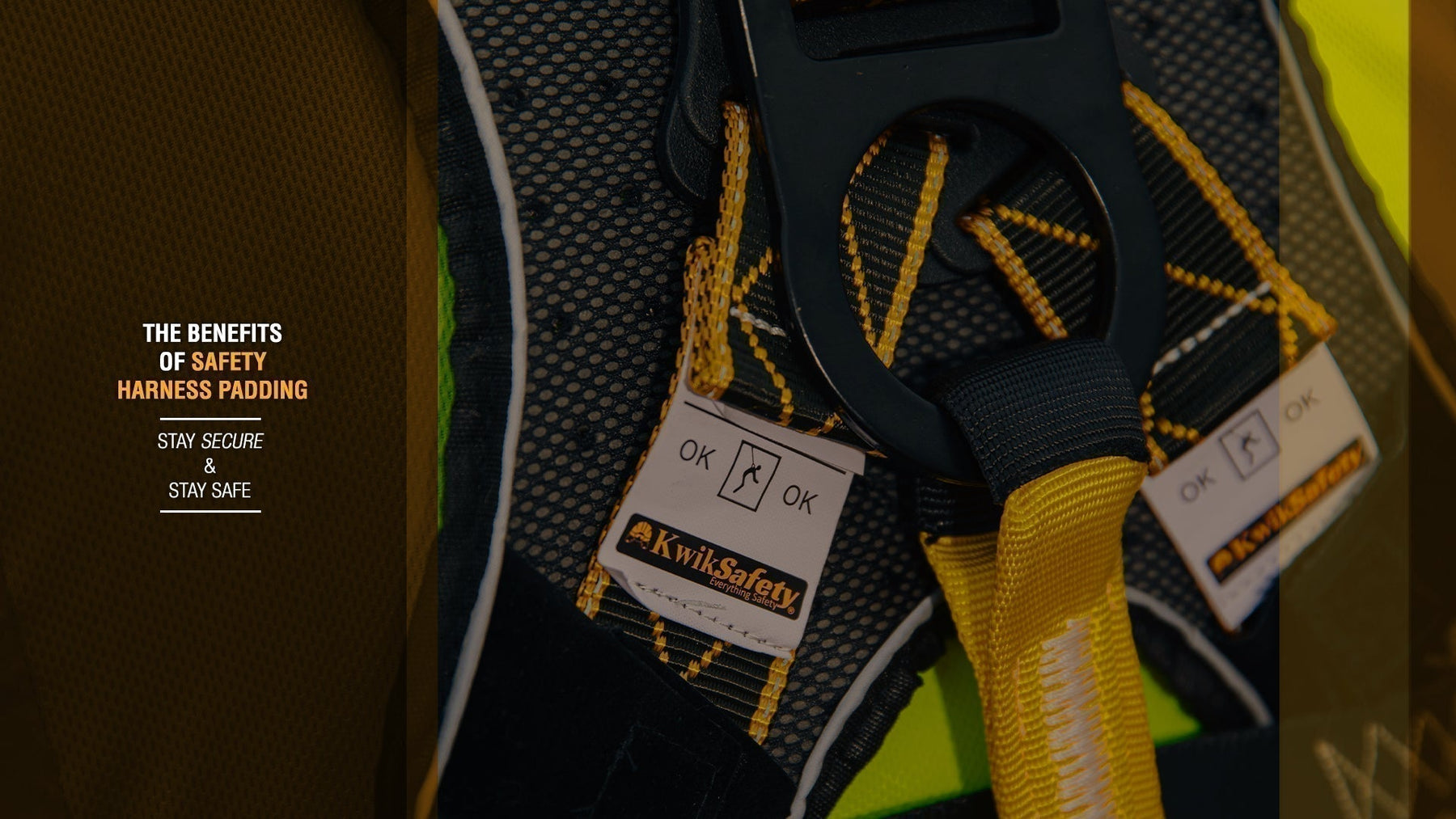Free Shipping | 30 Day Returns | Mix & Match Sitewide
Free Shipping | 30 Day Returns | Mix & Match Sitewide

Wearing a safety harness for hours on end can take a toll on your body—especially in industries where long shifts and physically demanding tasks are the norm. That’s where harness padding comes in. But is it just a luxury feature, or does it actually improve comfort, safety, and productivity?
Let’s break it down!
___________
Harness padding typically refers to added cushioning sewn into key contact points of a full-body harness:
Shoulder straps
Leg straps
Back or waist support areas
These pads are often made from breathable foam, mesh, or gel materials designed to distribute weight and reduce pressure on high-stress areas.
___________
Unpadded harnesses can dig into the neck, shoulders, and thighs during movement or prolonged wear. Padding spreads out the load to minimize localized strain.
Tight straps can constrict blood flow over time. Harness padding allows for a snug but more circulation-friendly fit, especially around the legs.
Breathable padding helps reduce sweat build-up and friction, two of the biggest culprits behind blisters, rashes, or bruising after long shifts.
___________
While padding doesn’t replace proper fall protection practices, it can help reduce:
Soft tissue injuries caused by continuous pressure or shifting loads
Strain on the shoulders and lower back during long-duration wear
Discomfort-related distractions, which can lead to reduced awareness or risky movements
When combined with well-placed D-rings and adjustable straps, padded harnesses offer better weight distribution, improving postural stability and reducing the likelihood of fatigue-induced mishaps.
___________
Harness padding is especially valuable in the following situations:
| Job Type | Why Padding Matters |
|---|---|
| Ironwork & Steel Erection | Heavy lifting and long durations in awkward positions |
| Tower & Wind Tech Work | Harness is worn all day with frequent climbing |
| Roofing & Construction | Repetitive motion and kneeling put pressure on shoulder and leg straps |
| Utility & Linework | Worn in warm weather or over thick layers—padding improves airflow and reduces rubbing |
| Boom Lift / MEWP Use | Limited movement, but constant weight on harness causes strain over time |
___________
When shopping for padded safety harnesses, here are the features that make a real difference:
Quick-dry mesh or moisture-wicking lining
Contoured shoulder pads that don’t bunch under layers
Leg padding that stays in place without sliding
Back support pads for added lumbar comfort
___________
While padded harnesses typically come at a higher price point, the return on investment is significant:
🔸 Higher worker satisfaction and reduced complaints
🔸 Better posture and longer wearability throughout the shift
🔸Fewer minor injuries and lower chances of equipment misuse
🔸 Improved productivity due to less discomfort and distraction
For companies trying to balance budget and performance, padded harnesses make sense for daily-use or heavy-duty tasks, while standard harnesses may suffice for short-term or low-movement applications.
___________
If your team works in demanding environments or wears harnesses for 4+ hours a day, investing in padded safety harnesses isn’t just about comfort—it’s about long-term protection and productivity. Whether you’re scaling towers or managing a construction site, comfort and safety go hand in hand.
Want to upgrade your gear?
Browse our full collection of padded safety harnesses, engineered for performance, durability, and all-day wear.
Follow us on social media to stay up-to-date on new products and much more!
Leave a comment